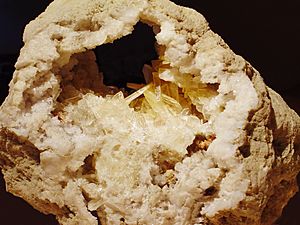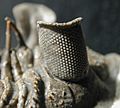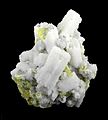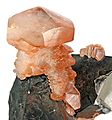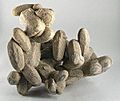Calcite facts for kids
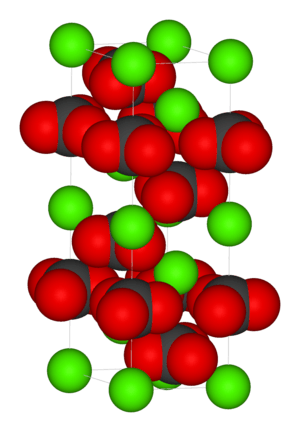
Calcite is one of the most widely distributed minerals on the Earth's surface. It is a common constituent of sedimentary rocks, limestone in particular. It is also the primary mineral in metamorphic marble.
It is a chemical or biochemical calcium carbonate corresponding to the formula CaCO3 and belongs to the carbonate mineral. One can find it as a vein mineral in deposits from hot springs, and in caverns as stalactites and stalagmites.
Calcite is often the primary constituent of the shells of marine organisms, e.g., plankton, the hard parts of red algae, some sponges, brachiopoda, echinoderms, most bryozoa, and parts of the shells of some bivalves (such as oysters and rudists).
Trilobites, which became extinct a quarter billion years ago, had unique compound eyes that used clear calcite crystals to form the lenses.
Images for kids
-
One of several calcite or alabaster perfume jars from the tomb of Tutankhamun, d. 1323 BC
-
Trilobite eyes employed calcite
-
Calcite crystals inside a test of the cystoid Echinosphaerites aurantium (Middle Ordovician, northeastern Estonia)
-
Calcite crystal canted at an angle, with little balls of hematite and crystals of chalcopyrite both on its surface and included just inside the surface of the crystal
-
Thin section of calcite crystals inside a recrystallized bivalve shell in a biopelsparite
-
Cobaltoan, the cobalt-rich variety of calcite
-
Sand calcites (calcites heavily included with desert sand) in South Dakota, USA
-
Calcite, butterfly twin, 4,0 × 3,3 × 1,6 cm. José María Patoni, San Juan del Río, Durango (Mexico)
See also
 In Spanish: Calcita para niños
In Spanish: Calcita para niños


